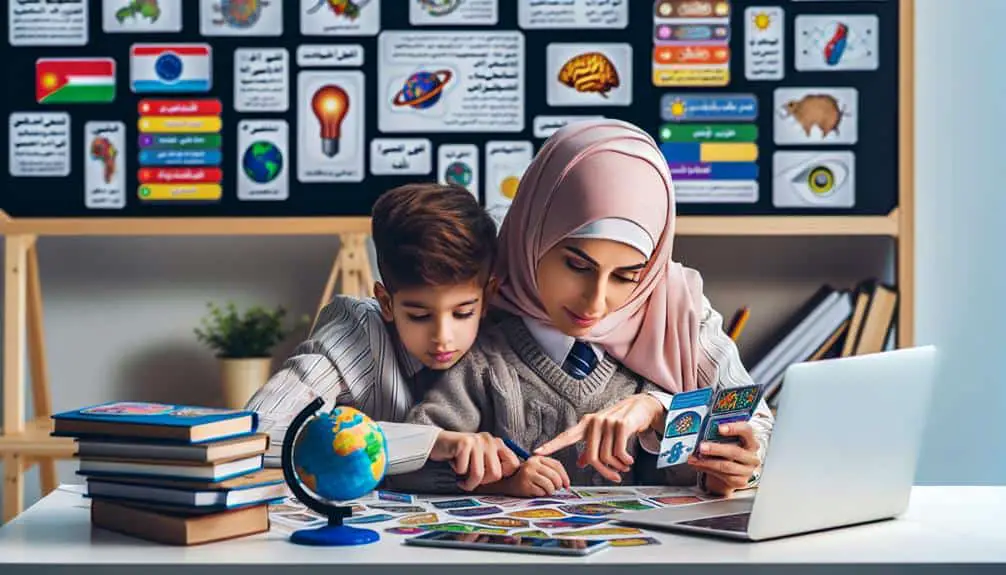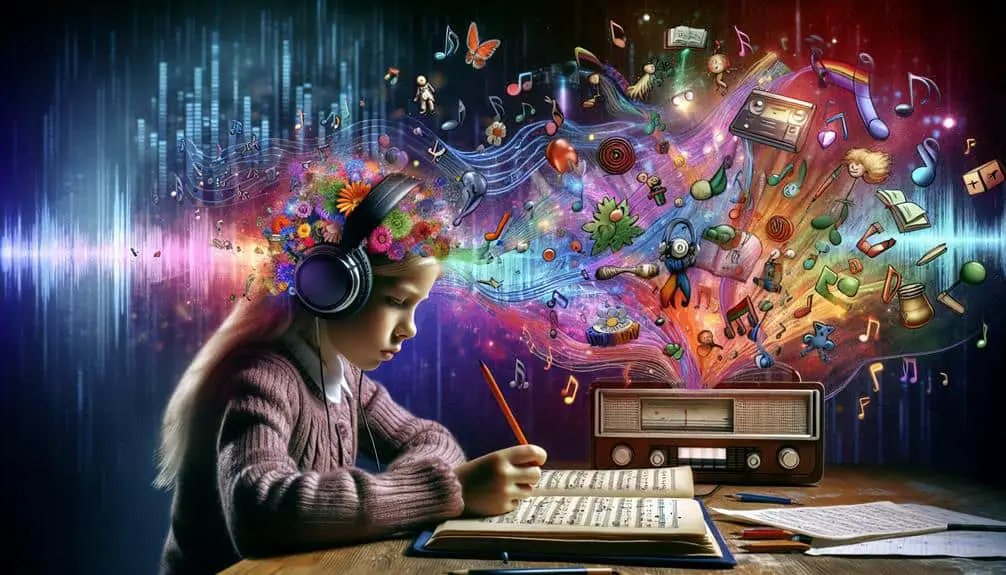Discover practical applications of learning styles in homeschooling to tailor lessons to your child's unique way of processing information. Enhance engagement by adjusting teaching methods for visual, auditory, and kinesthetic learners. Utilize visual diagrams, interactive presentations, hands-on activities, and movement breaks to create an effective learning environment. Evaluate progress regularly and adapt approaches based on strengths and weaknesses. By understanding and implementing these strategies, you can boost your child's success in homeschooling. Further insights await to help you optimize your teaching techniques for various learning styles.
Key Points
- Identify your child's learning style to tailor lessons effectively.
- Use visual diagrams, interactive presentations, and color coding for visual learners.
- Engage auditory learners with hands-on activities, music, and interactive games.
- Encourage kinesthetic learners through movement breaks and multi-sensory approaches.
- Regularly evaluate progress, adjust teaching methods, and seek feedback for improvement.
Identifying Learning Styles in Homeschooling
When homeschooling, identifying the learning styles of your child is important for tailoring an effective educational approach. Understanding your child's learning preferences is vital for homeschooling success. Each child has unique ways of processing information, and providing individualized instruction based on their learning style can lead to more effective strategies.
To identify your child's learning style, observe how they engage with different types of activities. Some children may excel with visual aids, while others may prefer hands-on activities or auditory methods. Pay attention to how your child retains information best and tailor your teaching approach accordingly.
Research suggests that children learn best when information is presented in a way that aligns with their learning style. By catering to your child's preferences, you can create a more engaging and effective learning environment. This individualized approach can lead to greater retention of information and overall homeschooling success.
Tailoring Lessons to Visual Learners
To optimize the educational experience for visual learners in homeschooling, tailor lessons to incorporate visual aids and materials that cater to their preferred learning style. Visual aids can notably enhance the learning process for visual learners by providing them with clear, memorable representations of the information being taught.
Here are three strategies to effectively tailor lessons for visual learners:
- Utilize Visual Diagrams: Incorporate charts, graphs, mind maps, and other visual diagrams to help visualize complex concepts. This visual representation can aid in better understanding and retention of information.
- Interactive Presentations: Create interactive presentations that include images, videos, and animations to engage visual learners actively. Interactive elements can make learning more dynamic and stimulating for this group of students.
- Color Coding: Use color-coded notes, flashcards, and highlighting techniques to organize information visually. Color association can help visual learners categorize and recall details more effectively.
Engaging Auditory Learners With Hands-On Activities
Engage auditory learners effectively through hands-on activities that stimulate their sense of hearing and promote interactive learning experiences. Hands-on experiments are a great way to captivate auditory learners' attention and enhance their understanding of concepts.
Consider incorporating auditory games that require listening skills and quick thinking. For example, you could set up a science experiment where auditory learners need to listen carefully to detect changes in sound frequencies. This not only reinforces their auditory processing but also makes learning engaging and memorable.
Another idea is to introduce music or audio stories related to the lesson's topic. Auditory learners often respond well to information presented in audio format, so incorporating songs or podcasts can help solidify their understanding. Additionally, interactive activities like creating soundscapes or participating in group discussions can further engage auditory learners and cater to their learning preferences.
Encouraging Kinesthetic Learners Through Movement
Encouraging kinesthetic learners involves incorporating movement-based activities that align with their preferred learning style, enhancing their comprehension and retention of information. For these learners, physical activities play an essential role in the learning process.
Here are three ways to effectively engage kinesthetic learners through movement:
- Incorporate Physical Activities: Integrate hands-on tasks, role-playing exercises, or educational games that require physical movement to help kinesthetic learners absorb information more effectively.
- Provide Movement Breaks: Offer regular breaks during study sessions for short bursts of physical activity. This can help kinesthetic learners refocus their energy and maintain engagement with the material.
- Utilize Multi-Sensory Approaches: Combine movement with other sensory experiences like visual aids, music, or interactive tools to create a holistic learning environment that caters to kinesthetic learners' needs.
Evaluating Progress and Adjusting Approaches
Evaluating the effectiveness of teaching methods for kinesthetic learners involves regularly reviewing progress and making necessary adjustments to optimize their learning experience. Progress assessment is vital in understanding what works best for these learners.
Observing how well they retain information through hands-on activities, movement, and practical applications can provide insights into their development. By tracking their progress, you can identify areas of strength and weakness, allowing you to tailor your approach accordingly.
Adaptation strategies play a key role in enhancing the educational journey of kinesthetic learners. If certain methods are proving to be less effective, consider incorporating more movement-based activities or real-world applications to better engage them. Flexibility in your teaching approach is essential to meet the dynamic needs of kinesthetic learners.
Additionally, seeking feedback from the learners themselves can offer valuable perspectives on what's working well and what could be improved. Adjusting your methods based on these insights can lead to a more effective and enjoyable learning experience for kinesthetic learners.




